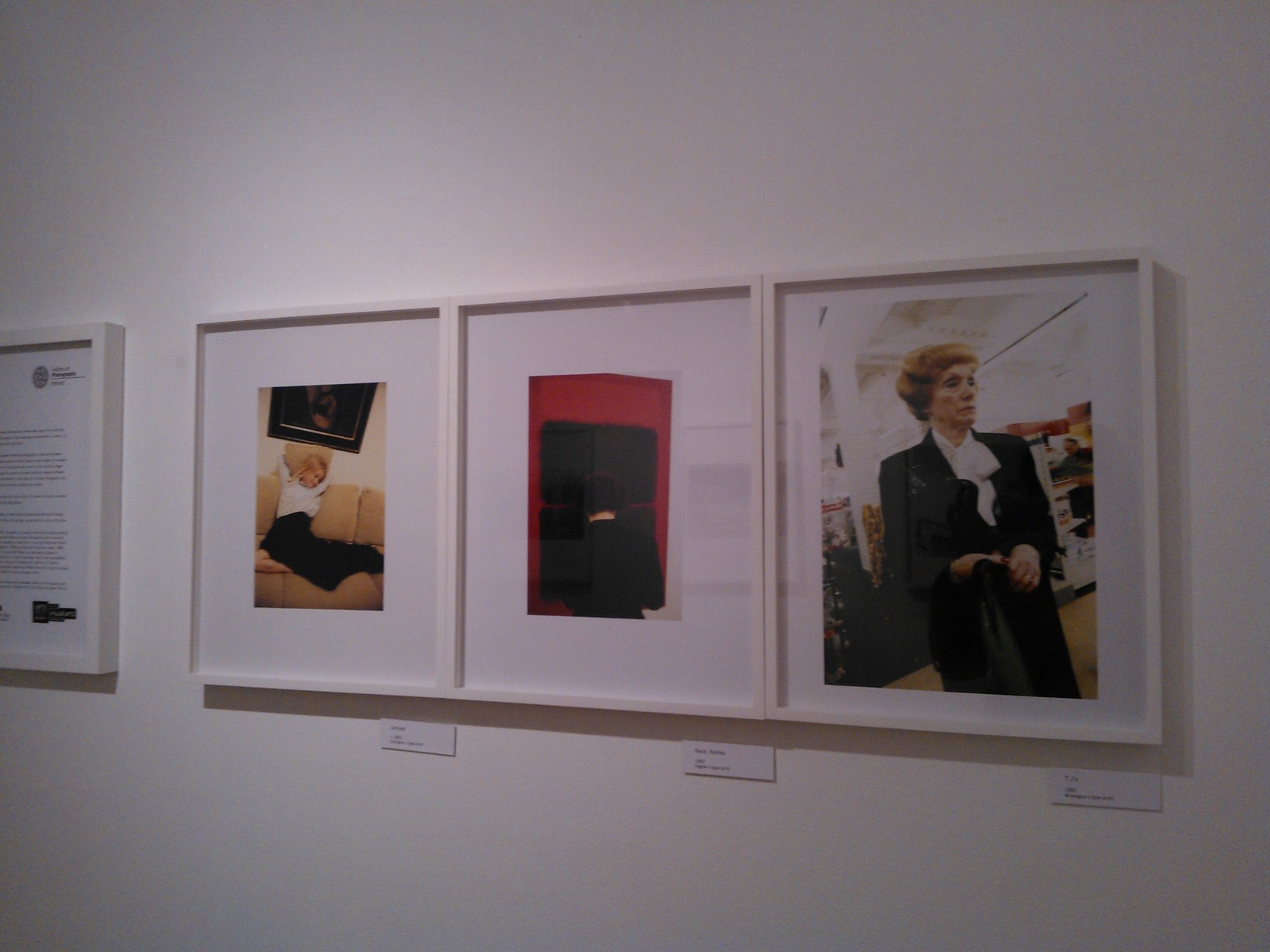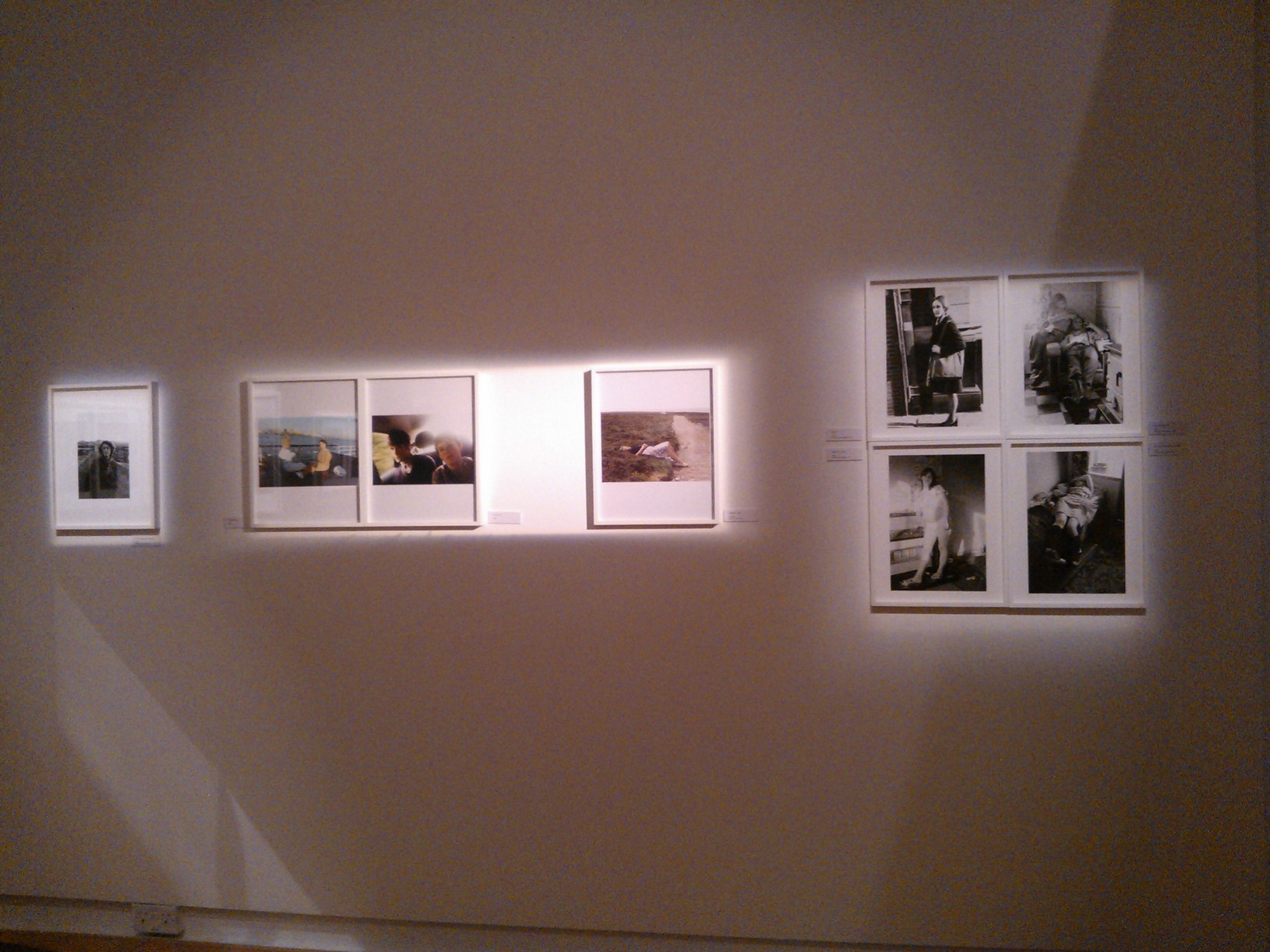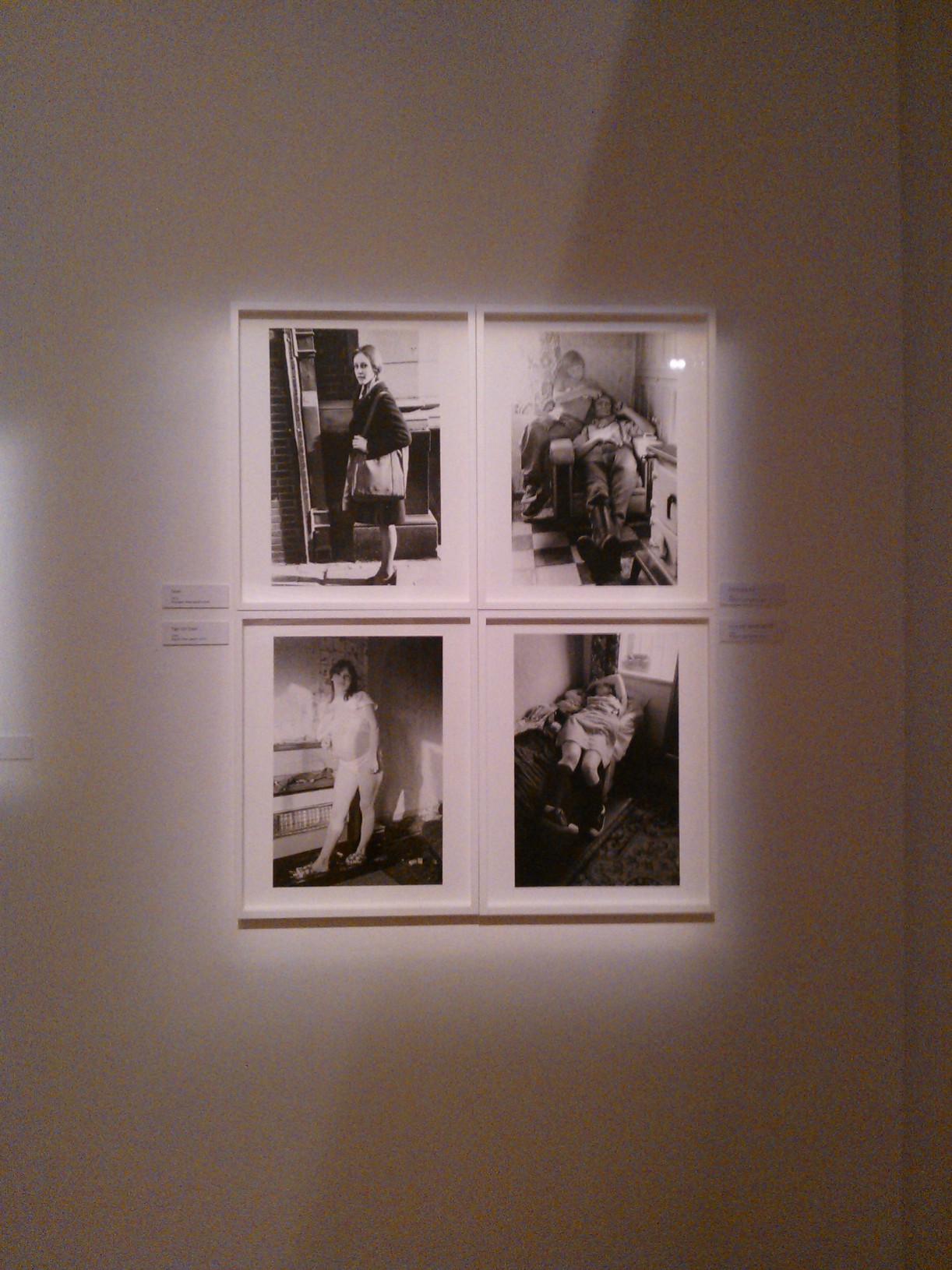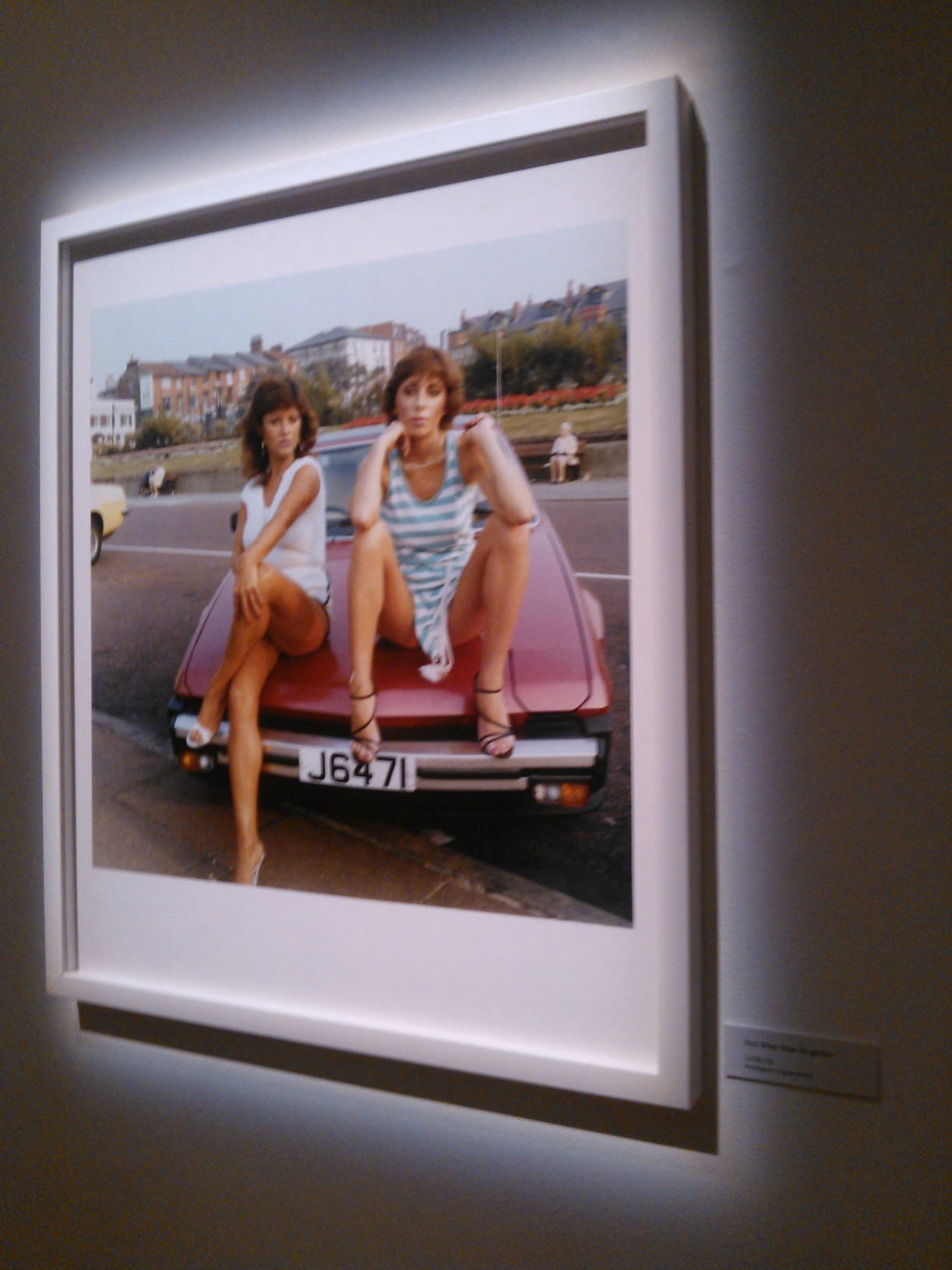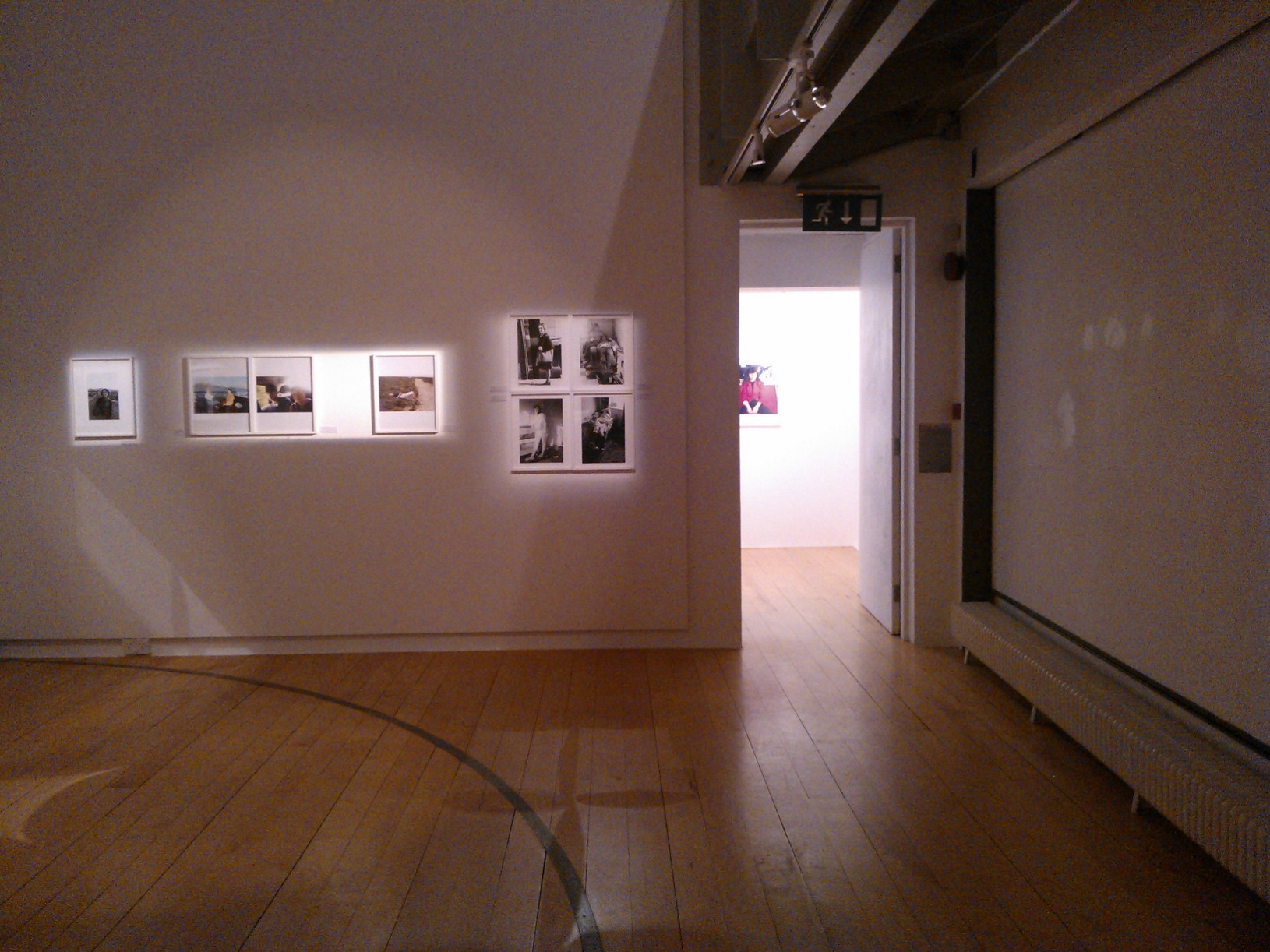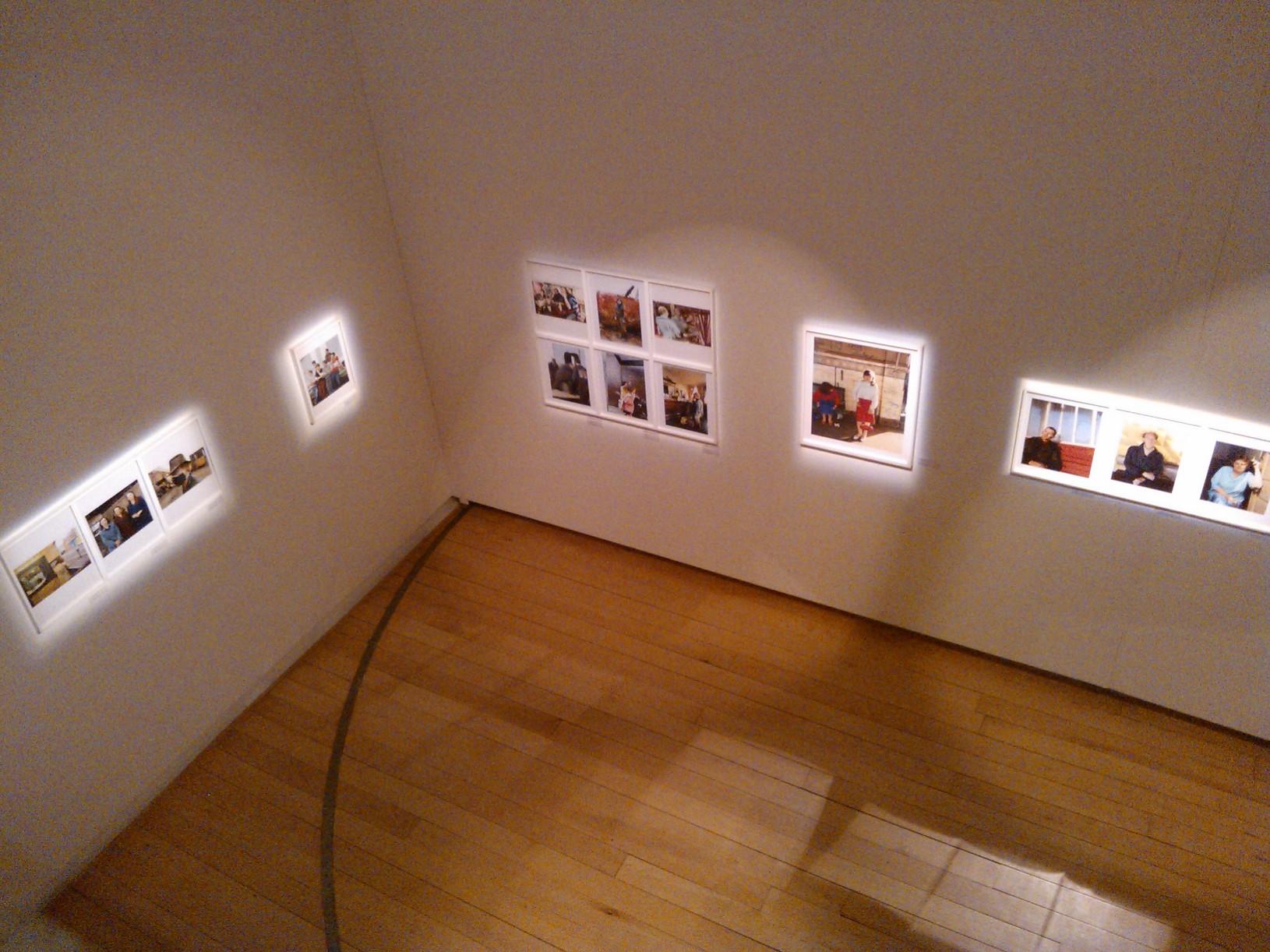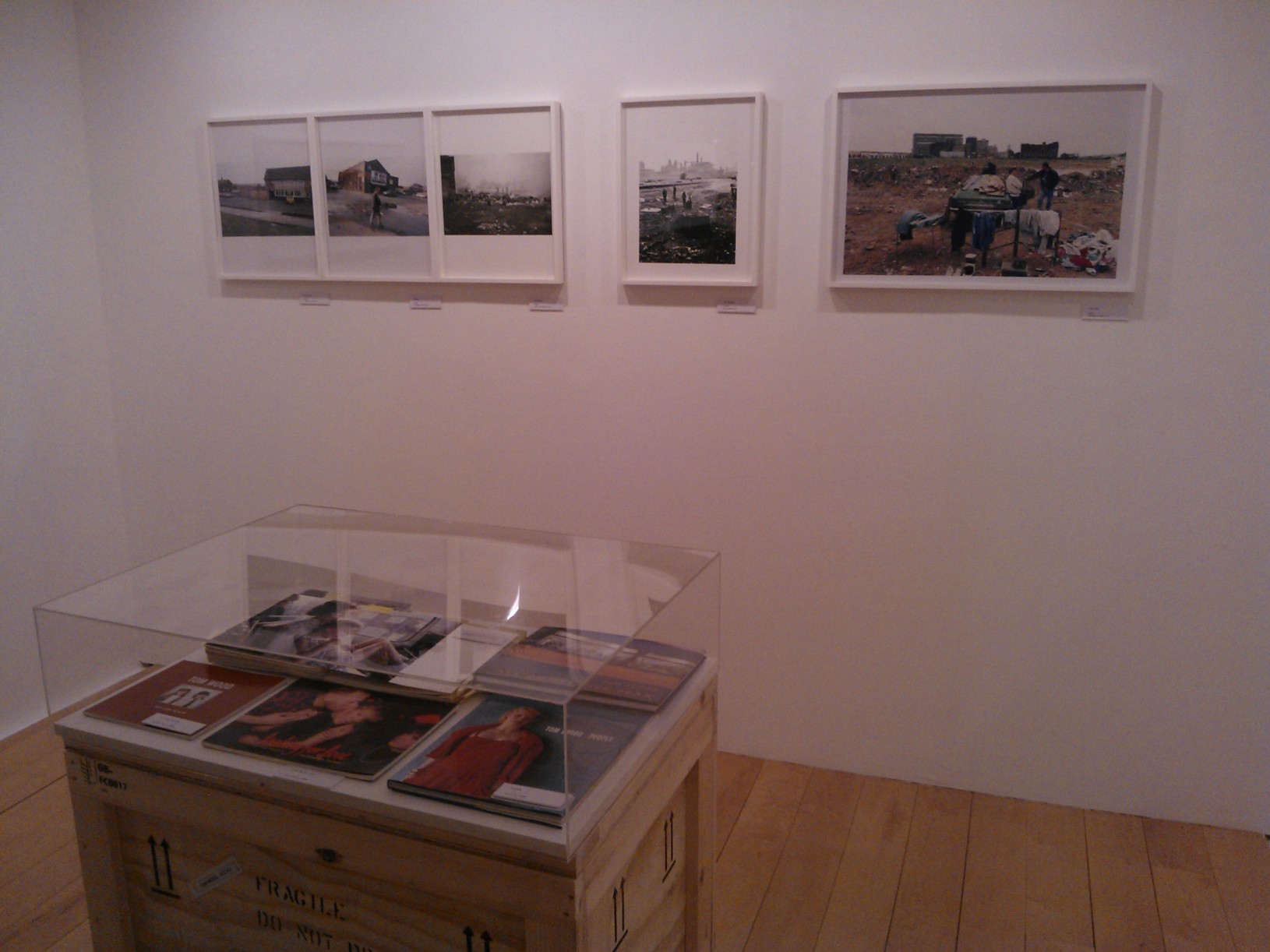Men & Women. Tom Wood
Tom Wood's exhibition Men & Women opened last week at Belfast Exposed, the fourth and final iteration of the exhibition which has been touring and reconfiguring across the UK and Ireland.
Men & Women is the result of a creative collaboration with artist Padraig Timoney and a journey through Tom Wood's extensive photographic archive. Wood sometimes organises his images into the two headings that make up the title of the exhibition – 'Men' and 'Women' but usually exhibits particular bodies of work or projects that are time and subject specific (football grounds, markets, nightclubs etc.). These archival headings provide an opportunity. Men & Women is the first time a selection of Wood's photography has been shown that encompasses his entire back-catalogue from the early 80's to present.
Up until 2001, the North-West and Merseyside were a consistent focus for Irish born Wood's photography. He lived and taught photography in Liverpool from 1978 until his move to North Wales. The subjects, therefore, are local faces and well known to Wood who would spend two days teaching and five days wandering the streets with his camera. This earned him the nickname 'Photie Man' locally and Wood has said how often he would take a photograph of certain people 'just to shut them up'. The process, for Wood, was very much an exchange and he would make prints and leave them in a box by his door letting the subjects know, as he walked about town, that they were welcome to call in and collect one.
I caught the exhibition just before it closed at The Photography Gallery, Dublin, which presented a slimmed down version of Men & Woman first shown in London in late 2012/early 2013 and organised in collaboration with the National Media Museum, Bradford (who staged a major retrospective of Wood's work Tom Wood: Photographs 1973-2013 in 2013). The exhibition in Dublin was arranged across two floors and made good use of peripheral spaces as well as the main gallery. The exhibition led with a selection of single female portraits. A girl reclining cat-like on a sofa, another examining a Rothko painting – her neck a flash of colour. A larger print, Mother of the Cleverest Boy in England (1995), showed a young fashionable woman with gold earrings and a striking red jacket - a poster of the planets hangs in the room behind her head alongside a certificate, an indication of her son's achievements. The unexplained bandage on the woman's hand and the crutch next to her make this photograph a more complex portrait – of an individual, not only a mother defined by her offspring.
Black and white digital silver gelatin prints were displayed alongside analogue c-type prints throughout the exhibition. Last Day at Blacklers (1988) showed a woman examining an item in the Blacklers department store in Liverpool. The store was part of the fabric of Liverpool city life for many years and famous for its impressive Christmas grotto and its popular rocking horse Blackie (now part of the display at the Museum of Liverpool Life). Another image, Mrs Coulson (1973) shows a woman lying on the grass sunbathing, only her arms and legs are uncovered and if her shoes were not neatly arranged by her side, you might suspect that she was dead. This photograph was taken on one of the first rolls of film Wood's ever took and is a funny but intimate portrait of his landlady.
In the central gallery certain photographs were grouped together and spotlit, giving them a backlit appearance. Young and old were juxtaposed in Good Morning Ladies (1988) taken in of two women in a nursing home and the young boys prowling the streets of Untitled. Two girls pose provocatively on the bonnet of a red car at the seaside resort in Not Miss New Brighton (1978) – their expressions say they couldn't care less that they will never be awarded the title.
There is a familiarity between Wood's and his subjects that results in a pally warmth that emanates from some of the shots. The gang of boys in Ellese Line (1999) seem to have half a smile on their faces whilst attempting to look hard for the camera while the women's expression in Ladies' Toilet Attendant (1985) says 'come on then, lets get this over with'. Occasionally the expression of Wood's subjects is a little more fragile and the photograph taken appears a little more intrusive. Seacombe Ferry (1985) shows a young woman holding a small baby at the entrance to a ferry terminal. Waif-thin, her peach flanelette jumpsuit is almost the same colour as her skin and she wears a pair of pink heels which, in a moment, will have to teeter her and the pram down the steep ferry tunnel. She looks at the camera with a guarded expression, holding the baby as a deflection of the lens away from herself.
Seacombe Ferry, however, is one of the exceptions to Wood's cast of strong female characters. They are generally shown, in much greater number than the men, confident and often sexually dominant. When they pose, they generally pose face on, eyes directly to the camera. The men, on the other hand, are seen as youths in groups cock-sure and puppy-faced but when older often alone, age weathered faces looking lonely and perpetually solitary in the pubs and bus shelters. In a way, they are the more revealing photographs, the men stripped back and vulnerable.
The last room of Men & Women contained a case displaying several of Wood's key photographic publications including Looking for Love (1984-7) – capturing the clientèle of The Chelsea Reach Nightclub in New Brighton and Photie Man (2005). Book production has always been important for the artist, creatively as well as financially and part of the Men & Woman project is the publication, again with Padraig Timoney, of two new books. The book is a site where Wood's can be be more playful, pairing and making connections between the images. This way of working, although time-consuming, is also less cumbersome than the production of a physical exhibition.
Despite this, Woods has been exhibiting consistently over the last few years and currently on show is a large exploration and focus on his landscape photography at Mostyn in North Wales. Several more book projects are also in the pipeline. I would assume that it will be a while again before Woods' photography is given this much attention in the exhibition format and this is good opportunity to acquaint or re-acquaint yourself with his work. Men & Women, children, beaches gardens, shopping centres - in a way, Woods has always been a landscape photographer - an accidental archivist of our environment and of our time.
Men & Women runs until 14 March 2014 at Belfast Exposed and his exhibition, Tom Woods - Landscapes runs until 6 April at Mostyn, Llandudno. A longer consideration of this show will appear on this blog very soon.
More information about Tom Wood's 2013-4 exhibition projects can be found on each venues website
National Media Museum, Bradford
http://www.nationalmediamuseum.org.uk/PlanAVisit/Exhibitions/TomWood/Introduction.aspx
The Photographers Gallery, London
http://thephotographersgallery.org.uk/men-women-2
The Gallery of Photography, Dublin
http://www.galleryofphotography.ie
Belfast Exposed, Belfast
Mostyn, llandudno
http://www.mostyn.org/whats_on/tom_wood_-_landscapes
An excellent interview with Tom Wood's can be found on Paper Journal –
www.paper-journal.com/tom-wood

